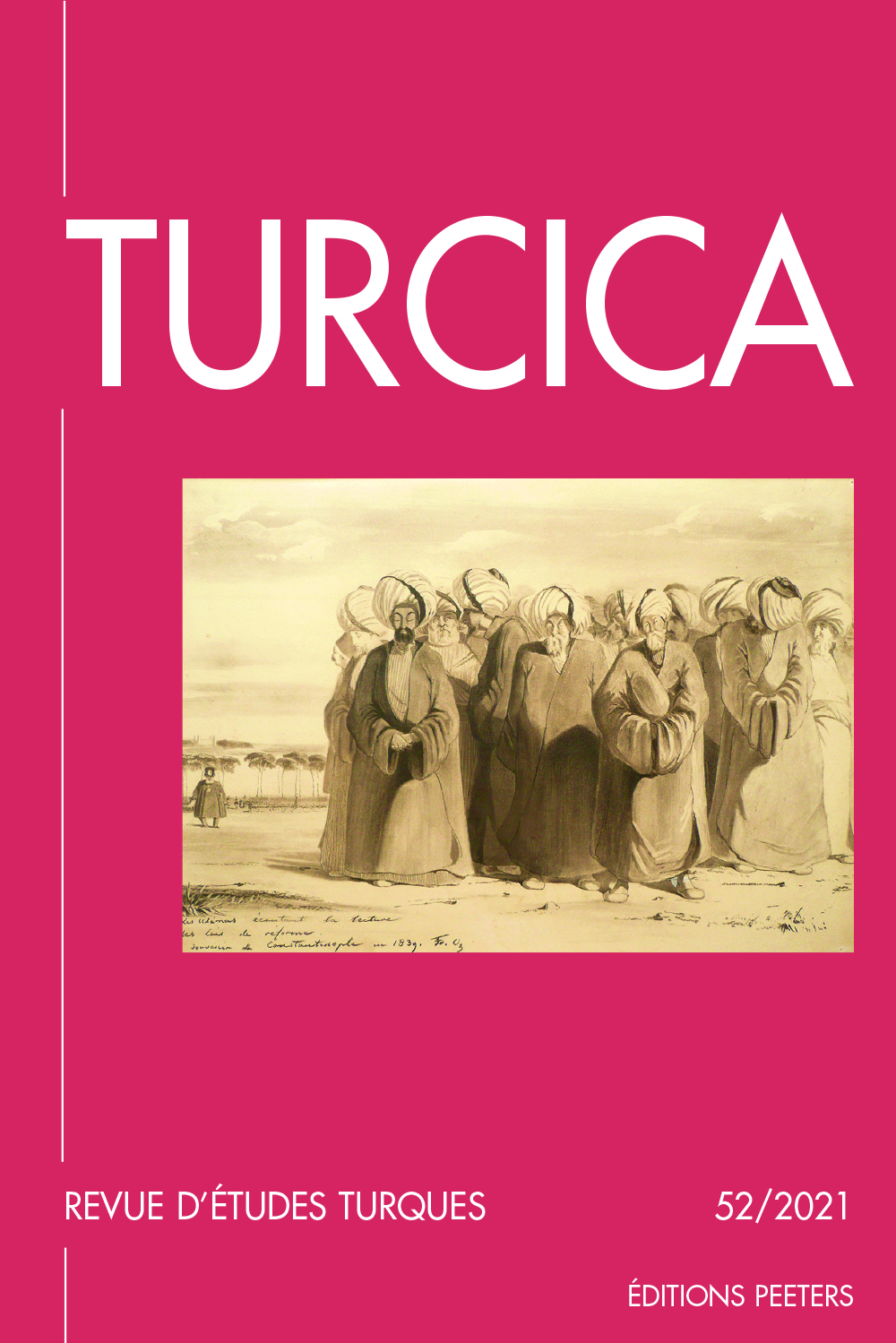 previous article in this issue previous article in this issue | next article in this issue  |

|
Document Details : Title: À propos de quelques stèles «ottomanes» du XIXe siècle au Caire Author(s): VATIN, Nicolas Journal: Turcica Volume: 41 Date: 2009 Pages: 341-350 DOI: 10.2143/TURC.41.0.2049299 Abstract : Le mausolée du Hoch el-Bacha, au Caire, abrite des monuments funéraires qui frappent par leur caractère ottoman: il s’agit de sarcophages de marbre surmontés de stèles de tête et de pied portant un couvre-chef. Le présent article tente d’analyser le caractère «ottoman» de 25 de ces monuments. On notera d’abord que si la forme et le décor paraissent ottomans, on repère aussi des particularités: partie supérieure bombée, inscriptions pieuses sur le sarcophage, décors d’iris et de fleurs de lotus… Quant aux épitaphes stricto sensu, elles se répartissent en deux groupes. Sept inscriptions des années 1830-1846 proposent des textes originaux en turc, reprenant les poncifs de la littérature funéraire ottomane, et frappent par la présence de chronogrammes: ils montrent une bonne acclimatation de la pratique ottomane et le maintien d’une influence stambouliote. Le deuxième groupe comporte 18 inscriptions de 1812-1816. Rédigées dans un arabe assez simple pour être compris d’un Turc ottoman, elles reprennent des éléments d’un formulaire stéréotypé ancien, mais avec des traits purement ottomans: invocation à Dieu, benedictio, titres usuels; surtout, la formule bien turque rûḥı içün el-fâtiḥa, typique des cimetières ottomans, donne à ces épitaphes une nature sciemment ottomane. Mais si la formule est reprise, il semble que ce soit dans l’ignorance du contexte qui lui donne sa valeur dans une épitaphe turque. On parlera donc plutôt, ici, d’hybridation. One can see in the Hosh el-Basha mausoleum, in Cairo, funeral monuments showing a striking Ottoman character: namely, marble sarcophagi bearing a head and a foot stone with a headgear. This paper analyses the «Ottoman» character of 25 of these monuments. A first remark is that if the shape and the ornaments seem Ottoman, one can as well discern pecularities: a curved upper part, pious inscriptions on the sarcophagus, engravings of irides and lotus flowers… As for the epitaphs strictly speaking, they form two different groups. Seven inscriptions from the years 1830-1846 are original Turkish texts, with the commonplaces of the Ottoman funeral literature, and a striking presence of chronograms: they show a good acclimatation of the Ottoman practice and the influence of Istanbul. The second group is constitued of 18 inscriptions of the years 1812-1816. Written in an Arabic simple enough to be understood by an Ottoman Turk, they use old stereotypes, but with some purely Ottoman elements: an invocation to God, a benedictio, titles; last but not least, the Turkish formula rûḥı içün el-fâtiḥa, which is typical of the Ottoman cemeteries, gives to these epitaphs an obvious Ottoman nature. But it seems that the formula is borrowed without a knowledge of the context that gives it its value in a Turkish epitaph. One would rather speak, then, of a kind of hybridization. |
 |
